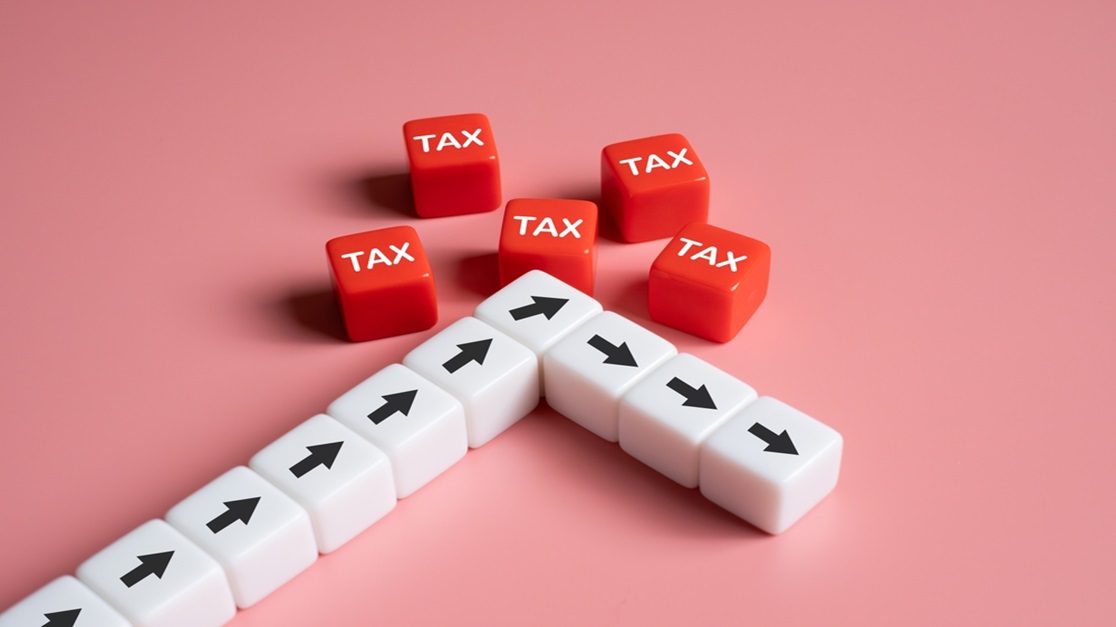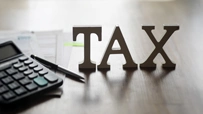How to Minimise Tax on Fixed Deposit Earnings
September 10, 2025

Fixed Deposits are probably the most preferred choice of investments in Indian household. However, they are not tax efficient. FDs are subject to tax based on your tax slab. Additionally, a TDS of 10% is applicable on FD interest, provided the interest income exceeds ₹50,000 (₹1 lakh for senior citizens) in a financial year. That said, you can still save on your tax outgo by implementing effective tax-saving strategies.
In this article, we'll explore the different ways you can minimise taxes on fixed deposit earnings. By implementing these strategies and being aware of tax rules, you can make informed financial decisions that will benefit you in the long run.
What is the FD Tax Rule In India?
Interest earned on fixed deposits (FDs) is fully taxable in India and classified under "Income from Other Sources." The taxation of FD interest is subject to the individual's income tax slab, and Tax Deducted at Source (TDS) is applicable when the interest exceeds certain thresholds.
Taxation Details
Tax Slabs
The interest income from FDs is added to your total income and taxed according to your applicable tax slab. For example
If you earn ₹25,000 in interest and fall into the 20% tax bracket, you will pay ₹5,000 in tax (₹25,000 * 20%) on that interest.
TDS Thresholds
For senior citizens (60 years and above), the threshold is ₹1,00,000 (applicable for FY 2025-26). For 2024-25, TDS exemption for senior citizens is capped at ₹50,000. If your interest is below these limits, no TDS will be deducted.
TDS Rate
The TDS rate on FDs is 10% of the interest that is earned. However, if you do not provide your Permanent Account Number (PAN), TDS of 20% would be levied.
Examples
Example 1: Ritwik has a 3-year FD that earns him ₹25,000 annually. Since his total taxable income, including this interest, falls in the 20% tax bracket, he will owe ₹5,000 in taxes on the FD interest when he files his return.
Example 2: Mr. Dsouza earns ₹70,000 in interest from his FDs. The bank deducts ₹7,000 as TDS (10% of ₹70,000). However, since his total income places him in the 30% tax bracket, he must pay an additional ₹14,000 (total tax of ₹21,000 minus ₹7,000 TDS) when filing his return.
Disclaimer: The above calculation is for illustration purposes only. Ujjivan SFB is not responsible for the accuracy of the information.
How to Minimise Taxes On Fixed Deposit Earnings?
To minimise taxes on fixed deposit (FD) earnings, individuals can employ several strategies that leverage tax regulations effectively. Here are the key methods:
1. Utilise Form 15G and Form 15H
- Form 15G: This form can be submitted by individuals below 60 years of age to declare that their total income is below the taxable limit of ₹2.5 lakh (for old tax regime) and ₹4 lakh for new tax regime. By submitting this form, they can avoid TDS on FD interest if their income remains below this threshold.
- Form 15H: Senior citizens (60 years and above) can use this form to declare their income is below ₹3 lakh, thus exempting them from TDS on interest income up to ₹1 lakh annually.
2. Time Your FD Investments
One of the tax-saving strategies you can adopt is timing the initiation of fixed deposits, which can help in spreading the interest income across two financial years. For instance, starting a 1-year FD in September can result in interest being credited in two different financial years, potentially keeping each year's interest income below the TDS threshold of ₹50,000 (or ₹1 lakh for senior citizens - FY 2025-26) and minimising tax liability.
3. Split FDs Between Accounts
By dividing FDs across different accounts—like that of personal accounts and accounts under a HUF—individuals can make their interest income more tax effective. This strategy helps in keeping the interest earned from each account below the taxable limits, thus reducing overall tax implications.
4. Invest in Tax-Saving Fixed Deposits
Another way to minimise taxes on fixed deposit earnings is to use benefits under Section 80C, which allows individuals to claim deductions of up to ₹1.5 lakh from their taxable income. Tax Saving Fixed Deposits come with a lock-in period of 5 years. This investment not only helps in tax saving but also ensures capital protection and guaranteed returns.
Consider Senior Citizen Benefits
Senior citizens are allowed a higher TDS exemption limit (up to ₹1 lakh) on fixed deposit interest. By taking advantage of this provision, seniors can retain more of their interest income without incurring tax liabilities, thus enhancing their financial planning during retirement.
By implementing these strategies, individuals can effectively manage their tax liabilities associated with fixed deposit earnings, ensuring they retain a larger portion of their interest income.
Final Thoughts
To minimise taxes on fixed deposit earnings is possible by implementing effective tax-saving strategies and being aware of the applicable tax rules. Opting for tax-saving FDs, diversifying investments, and understanding TDS rules are some tax-saving strategies to adopt.
Looking to grow your savings faster? Ujjivan SFB offers a wide range of fixed deposit products. Select the FD of your choice and take a step forward to your financial goals. Alternatively, you can browse through Ujjivan SFB product suite - our wide range of financial products are designed to make your financial life better.
Disclaimer:
The contents herein are only for informational purposes and generic in nature. The content does not amount to an offer, invitation or solicitation of any kind to buy or sell, and are not intended to create any legal rights or obligations. This information is subject to updation, completion, amendment and verification without notice. The contents herein are also subject to other product-specific terms and conditions, as well as any applicable third-party terms and conditions, for which Ujjivan Small Finance Bank assumes no responsibility or liability.
Nothing contained herein is intended to constitute financial, investment, legal, tax, or any other professional advice or opinion. Please obtain professional advice before making investment or any other decisions. Any investment decisions that may be made by the you shall be at your own sole discretion, independent analysis and evaluation of the risks involved. The use of any information set out in this document is entirely at the user’s own risk. Ujjivan Small Finance Bank Limited makes no representation or warranty, express or implied, as to the accuracy and completeness for any information herein. The Bank disclaims any and all liability for any loss or damage (direct, indirect, consequential, or otherwise) incurred by you due to use of or due to investment, product application decisions made by you on the basis of the contents herein. While the information is prepared in good faith from sources deemed reliable (including public sources), the Bank disclaims any liability with respect to accuracy of information or any error or omission or any loss or damage incurred by anyone in reliance on the contents herein, in any manner whatsoever.
To know more about Ujjivan Small Finance Bank Products Visit:"https://www.ujjivansfb.in"
All intellectual property rights, including copyrights, trademarks, and other proprietary rights, pertaining to the content and materials displayed herein, belong
to Ujjivan Small Finance Bank Limited or its licensors. Unauthorised use or misuse of any intellectual property, or other content displayed herein is strictly prohibited and the same is not intended for distribution to, or use by, any person in any jurisdiction where such distribution or use would (by reason of that person’s nationality, residence or otherwise) be contrary to law or registration or would subject Ujjivan Small Finance Bank Limited or its affiliates to any licensing or registration requirements.
FAQs
1. Do the present FD tax rules charge tax on interest income?
Interest earned from fixed deposits is fully taxable. The present FD tax rules specify that such interest income would be added to the total income and taxed as per the tax slab of the person.
2. How can I minimise taxes on fixed deposit earnings?
You can minimise taxes on fixed deposit earnings by investing in tax-saving FDs, diversifying your investments, and utilising schemes like the Senior Citizen Saving Scheme.
3. Are there any tax deductions available for fixed deposits?
Yes, you can claim deductions under Section 80C of the Income Tax Act by investing in tax-saving fixed deposits.
4. What is Form 15G/15H?
Form 15G/15H is a declaration form that allows individuals with income below the taxable limit to avoid TDS on their fixed deposit earnings.
5. Can I invest in other options to reduce my tax liability on FD earnings?
Yes, diversifying your investments and considering tax-efficient options like PPF (Public Provident Fund) can help reduce your tax liability. Please note
6. How can senior citizens minimise taxes on their fixed deposit earnings?
Senior citizens can invest Tax Saver FDs to benefit from higher returns and potential tax deductions.
7. Can I withdraw money from a tax-saving fixed deposit before the lock-in period ends?
Tax-saving fixed deposits come with a lock-in period of 5 years, and premature withdrawals are not allowed.
8. What happens if I don't submit Form 15G/15H and TDS is deducted on my FD earnings?
If TDS is deducted on your fixed deposit earnings and you are eligible for exemption, you can claim a refund while filing your income tax return.
9. Are there any special interest rates for senior citizen fixed deposits?
Yes, banks offer higher interest rates for senior citizen fixed deposits compared to regular fixed deposits.
Latest Blogs

Dussehra 2025: How to Win Your Financial Battles with Smart Saving
Dussehra 2025 (also known as Vijayadashami) falls on Thursday, October 2, 2025.

eSIM Scam in India: I4C Warns Mobile Users About Rising Fraud – How to Stay Safe
The Indian Cybercrime Coordination Centre (I4C), a wing of the Ministry of Home Affairs, issued a strong warning to mobile users about the rapid increase in eSIM fraud in India.

How to Link PAN with Aadhaar: Step-by-Step Guide & Consequences of Not Linking
Linking your Permanent Account Number (PAN) with your Aadhaar is no longer just a best practice.

Annual Information Statement (AIS): A Complete Guide for Stress-Free ITR Filing
India’s tax season is in its final stretch.

ITR-1 (Sahaj) Restrictions: Income Sources Not Allowed & Filing Rules
With just a few days left before the 15 September 2025 deadline for filing Income Tax Returns (ITRs) for Assessment Year (AY) 2025-26, many taxpayers are rushing to submit their forms online.





